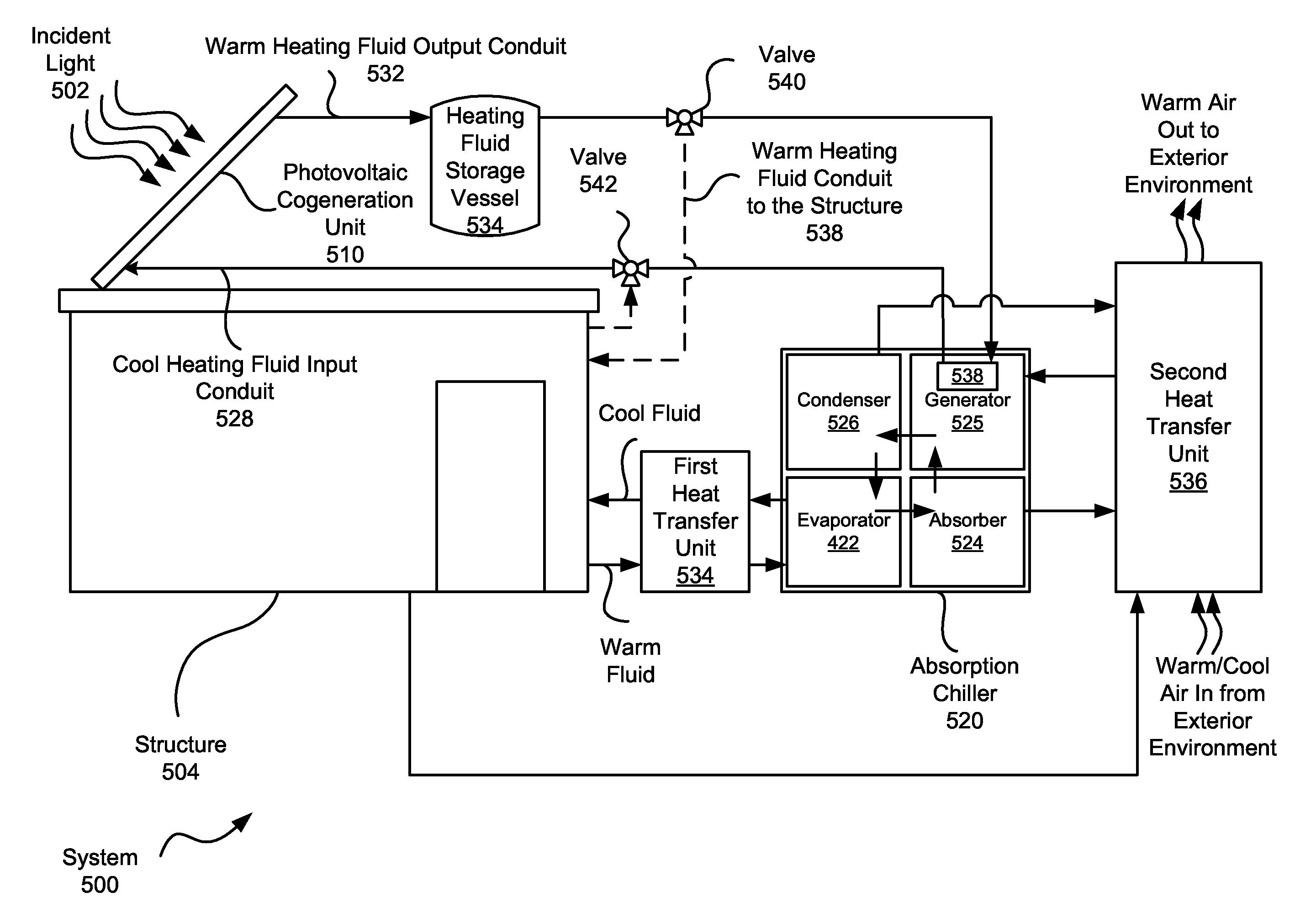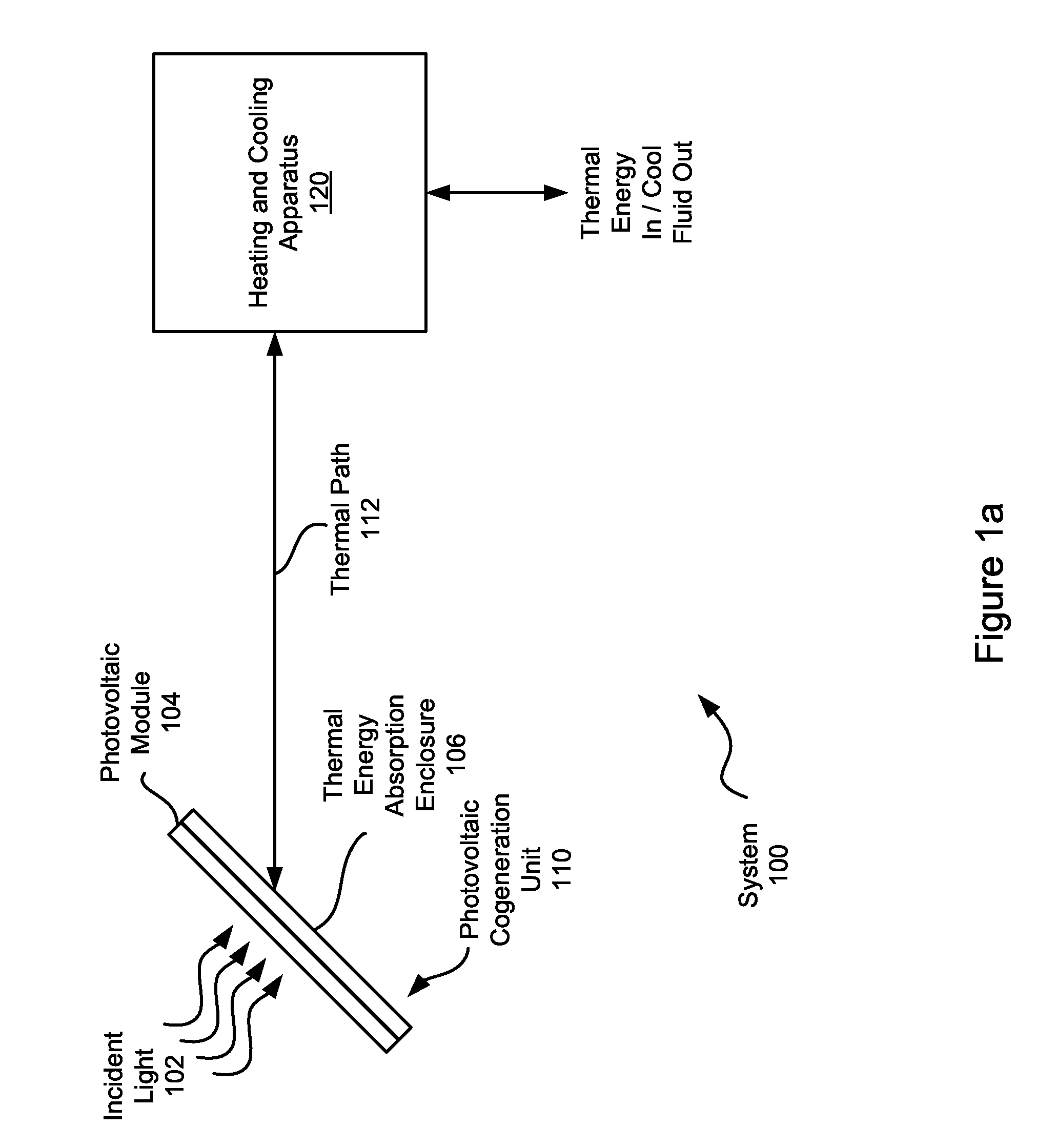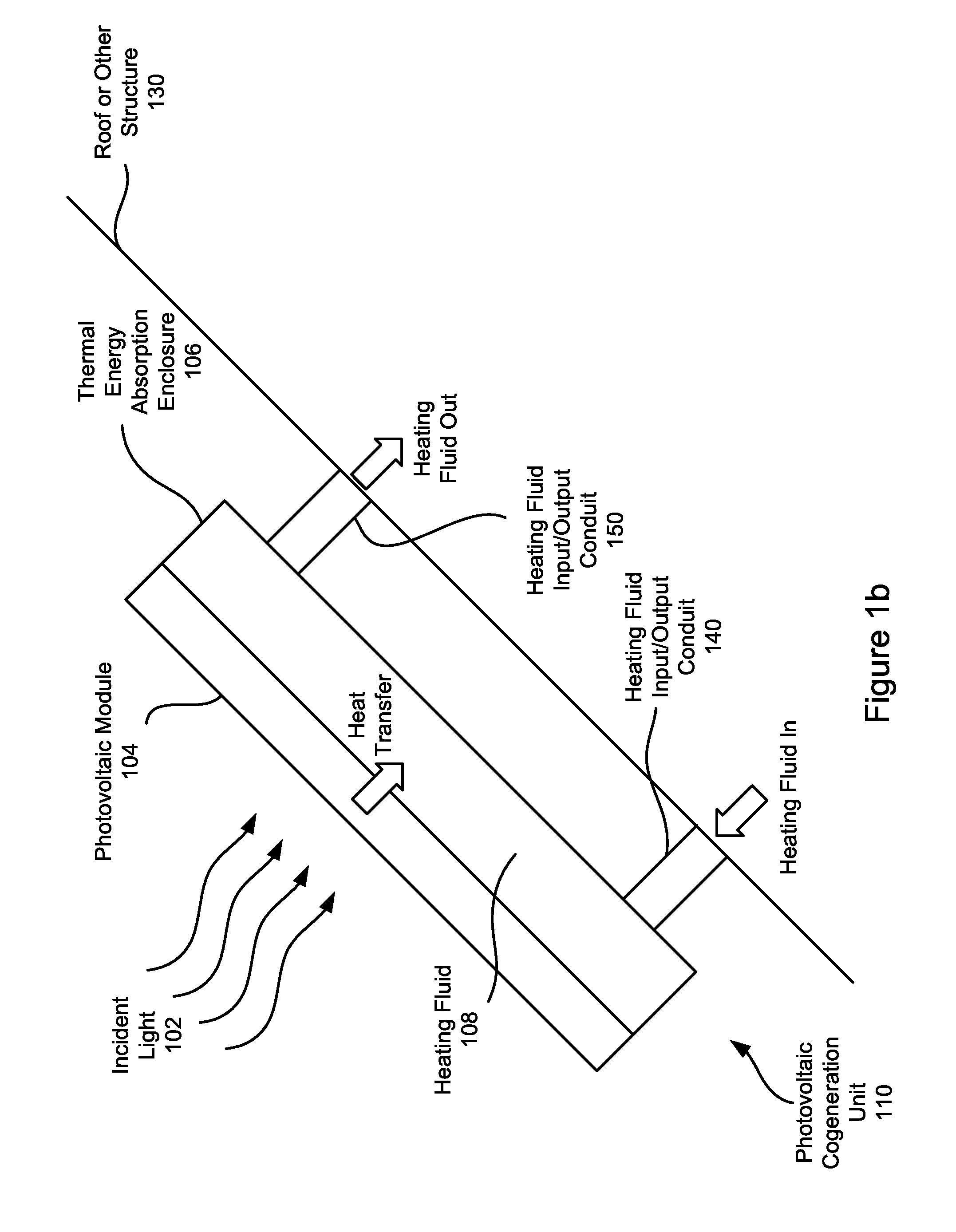Systems and Methods of Photovoltaic Cogeneration
a photovoltaic cogeneration and photovoltaic technology, applied in the field of photovoltaic systems, to achieve the effect of working more efficiently
- Summary
- Abstract
- Description
- Claims
- Application Information
AI Technical Summary
Benefits of technology
Problems solved by technology
Method used
Image
Examples
Embodiment Construction
[0020]The following description and drawings are illustrative and are not to be construed as limiting. Numerous specific details are described to provide a thorough understanding. However, in certain instances, well known or conventional details are not described in order to avoid obscuring the description. References to one or an embodiment in the present disclosure are not necessarily references to the same embodiment; and, such references mean at least one.
[0021]Photovoltaic systems tend to operate effectively in sunny locations (e.g., California, Arizona, Colorado, to name a few). Sunny locations also tend to be warm and utilize large amounts of electricity to power air conditioning or other cooling systems. Thus, cooling systems and photovoltaic systems are often found in the same locations, and often the photovoltaic systems generate the electricity that drives the cooling systems.
[0022]While sunlight provides energy to solar cells of photovoltaic systems, sunlight also decrea...
PUM
 Login to View More
Login to View More Abstract
Description
Claims
Application Information
 Login to View More
Login to View More - R&D
- Intellectual Property
- Life Sciences
- Materials
- Tech Scout
- Unparalleled Data Quality
- Higher Quality Content
- 60% Fewer Hallucinations
Browse by: Latest US Patents, China's latest patents, Technical Efficacy Thesaurus, Application Domain, Technology Topic, Popular Technical Reports.
© 2025 PatSnap. All rights reserved.Legal|Privacy policy|Modern Slavery Act Transparency Statement|Sitemap|About US| Contact US: help@patsnap.com



